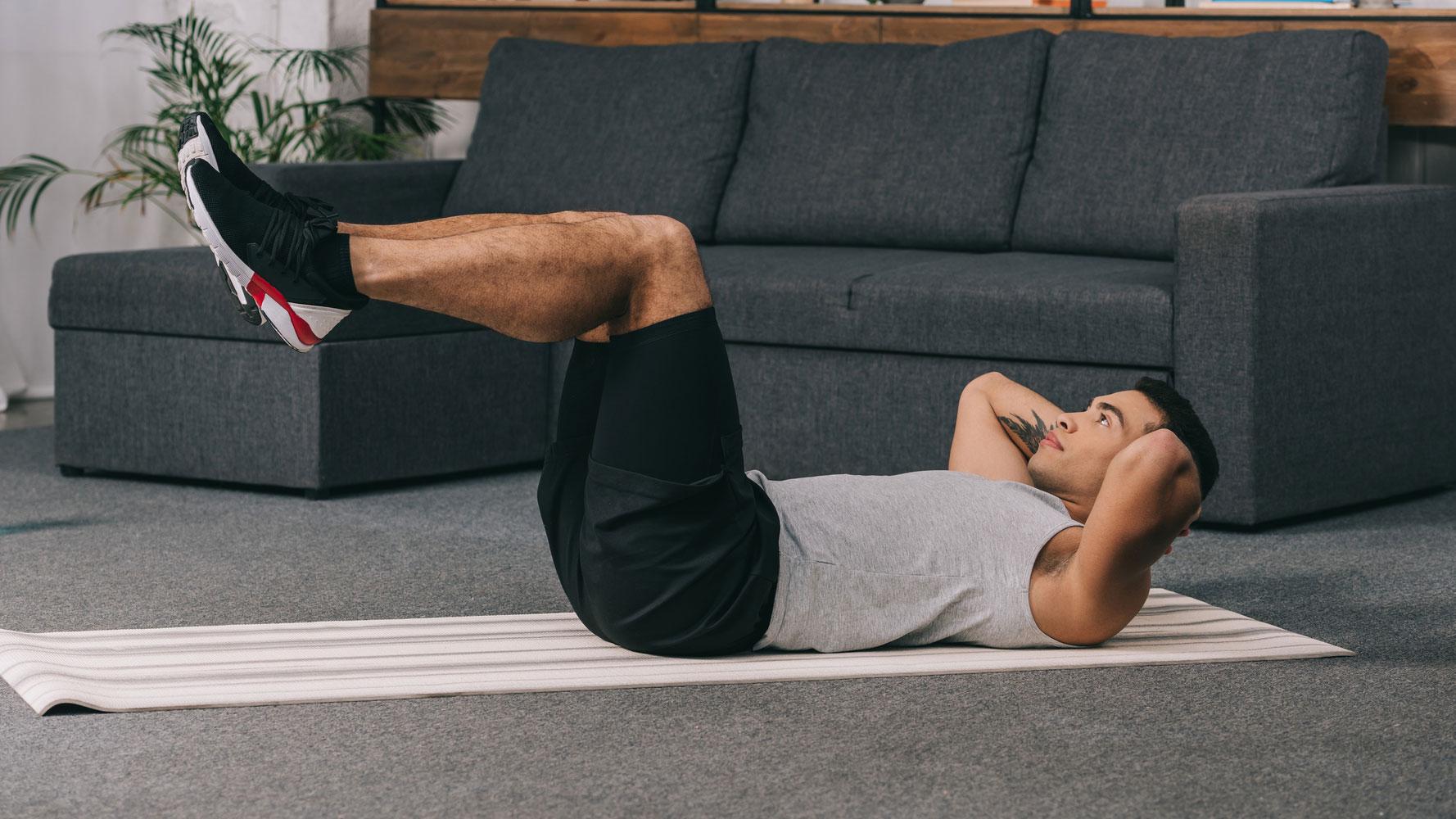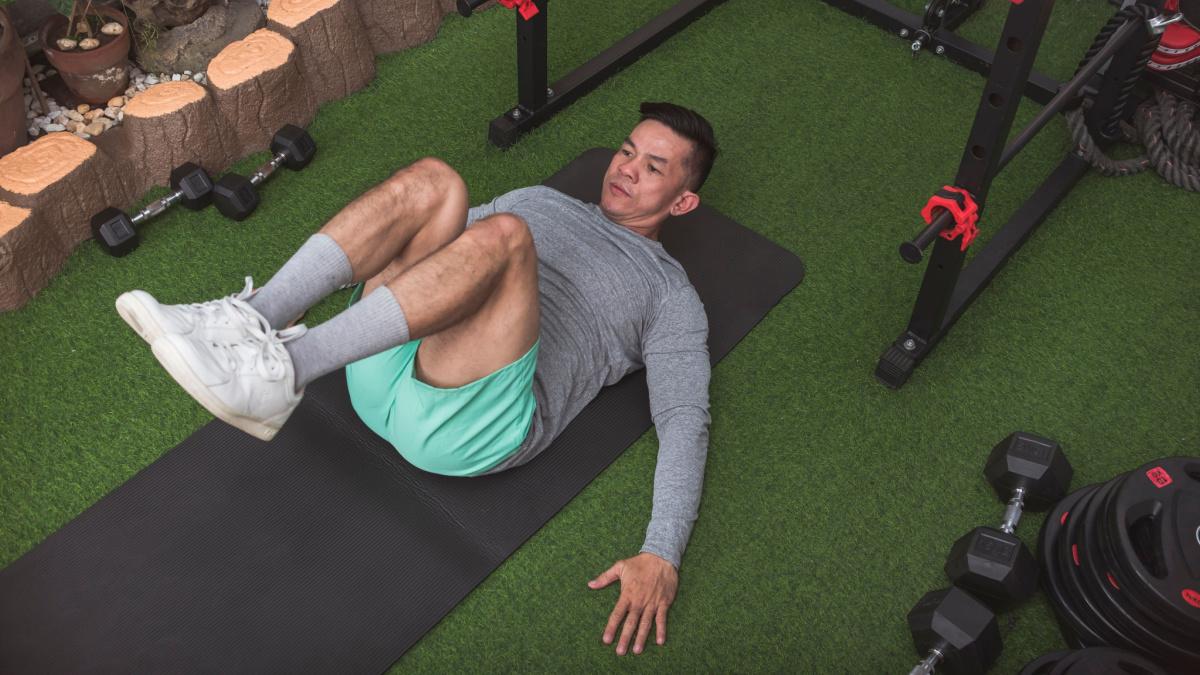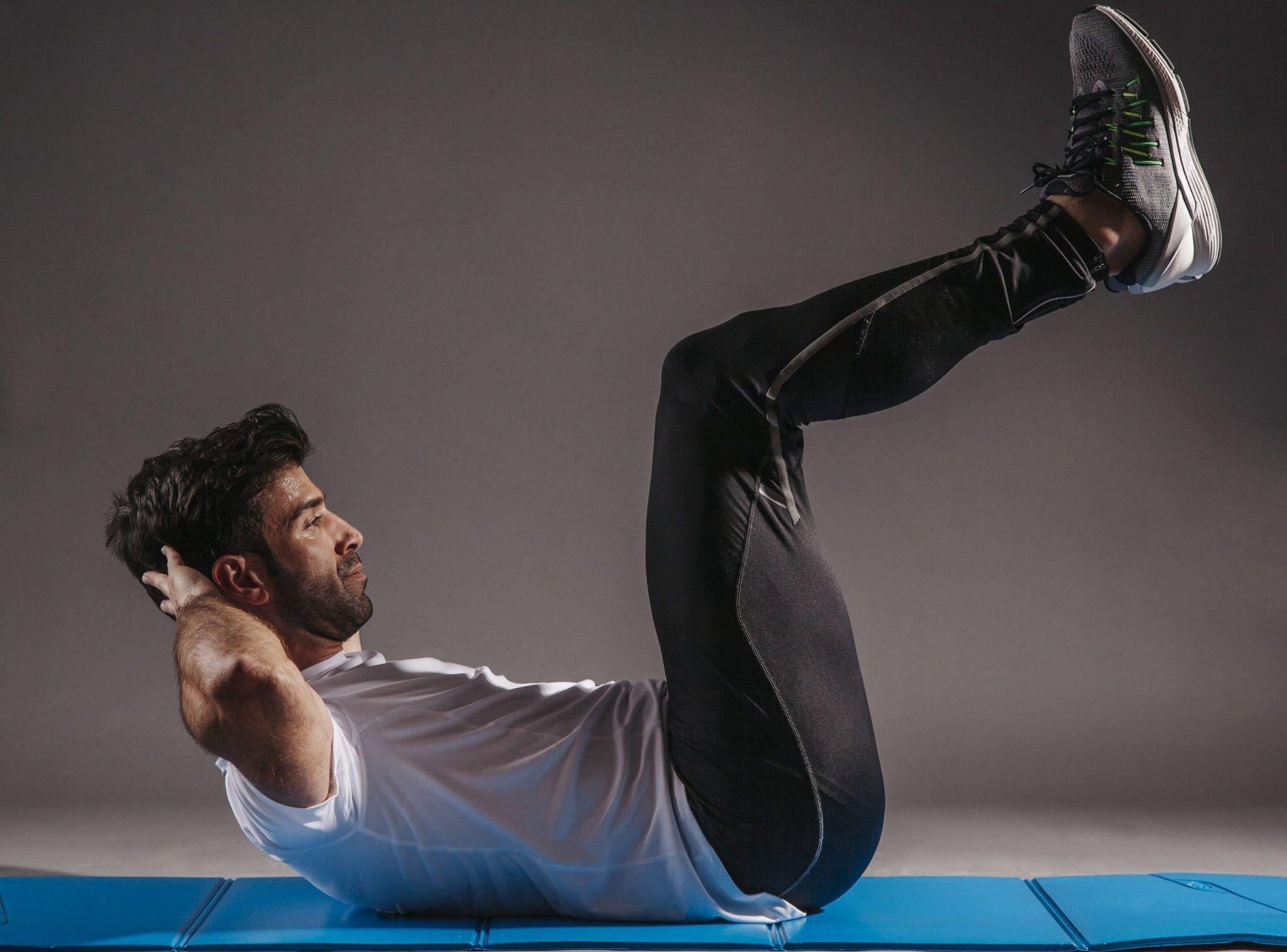Welcome to the ultimate guide on mastering the how to do reverse crunches! Whether you’re a fitness enthusiast or just starting your fitness journey, the reverse crunch is a fantastic exercise for strengthening your core muscles. In this article, we will walk you through the proper form of the reverse crunch, highlight common mistakes to avoid, and introduce you to exciting variations to challenge your core even further.
How To Do a Reverse Crunch: Form

In this section, we’ll break down the correct form of the reverse crunch step-by-step. BalanceFrom Ab Mat This cushioned mat provides support to your lower back during reverse crunches, reducing the risk of strain or discomfort.
1.How to do reverse crunches Starting Position
Lie flat on your back on a comfortable exercise mat or the floor. Bend your knees at a 90-degree angle and plant your feet firmly on the ground, hip-width apart. Place your arms at your sides, with your palms facing down for support.
2. How to do reverse crunches Engage Your Core
Take a deep breath and engage your core muscles by pulling your navel towards your spine. This action will create stability and protect your lower back during the exercise.
3. How to do reverse crunchesLift Your Legs
Now, slowly lift your legs off the ground, keeping them bent at the knees. Your thighs should be perpendicular to the floor, and your shins parallel to it. This is your starting position for the reverse crunch. Roller Wheel Take your core workouts to the next level with this ab roller wheel. It helps engage more muscles during reverse crunches and provides stability for proper execution.
4. How to do reverse crunches Perform the Crunch
Exhale as you initiate the movement by curling your pelvis towards your chest. Imagine rolling your hips off the floor. Continue lifting your hips until your lower back is slightly off the ground. Be mindful not to use momentum, and focus on engaging your abdominal muscles throughout the movement.
5. Lower Your Legs
Inhale and return to the starting position by lowering your legs back to the ground in a controlled manner. Avoid letting your feet touch the floor entirely between repetitions to keep tension on your core muscles.
6. Repeat
Complete the desired number of repetitions for a set, and remember to maintain proper form throughout the exercise.
Common Mistakes to Avoid

Even though the reverse crunch is a relatively simple exercise, many people make common mistakes that can lead to reduced effectiveness or even injuries. Let’s identify and address these errors to ensure you get the most out of your workouts. Resistance Loop Exercise Bands These resistance bands are perfect for adding an extra challenge to your reverse crunches.
1. How to do reverse crunches Using Momentum
One of the most prevalent mistakes is relying on momentum to perform the reverse crunch. Swinging your legs and using momentum takes the focus away from your core muscles, leading to reduced engagement and potential strain on your back. Instead, focus on controlled movements and deliberate muscle contractions.
2. Not Engaging the Core
Failing to engage your core throughout the exercise can render the reverse crunch ineffective. Your core muscles are the primary drivers of this movement, and without their activation, you’ll miss out on the core-strengthening benefits. Always remember to engage your core by drawing your navel towards your spine. Waist Trimmer If you want to intensify your reverse crunch sessions, consider using a waist trimmer
3. How to do reverse crunches Pulling on the Neck
Avoid the temptation to pull on your neck or head with your hands during the crunch. This can strain your neck and lead to discomfort. Instead, place your hands by your sides or lightly touch your temples, allowing your core to do the work.
4. Arching the Back
Arching your lower back during the reverse crunch places undue stress on your spine. Maintain a neutral spine position throughout the exercise to protect your back and focus the effort on your core.
5. How to do reverse crunches Going Too Fast
Performing the reverse crunch too quickly reduces its effectiveness and increases the risk of injury. Aim for slow and controlled movements, emphasising the mind-muscle connection to fully engage your core.
6. Neglecting the Breath
Breathing properly during exercise is crucial for maintaining stability and engaging your core effectively. Remember to exhale as you perform the crunch and inhale as you return to the starting position.
Variations of the Reverse Crunch

Adding variations to your reverse crunch routine can spice up your workouts and target different parts of your core. Let’s explore some exciting variations. Dumbbell Hand Weights Incorporating dumbbells into your reverse crunch routine can boost the effectiveness of the exercise.
1. Reverse Crunch with Leg Extension
This variation adds an extension of the legs, engaging your lower abs even further.
To perform:
Follow the same starting position as the standard reverse crunch.
Instead of lifting your legs straight up, extend them outward until they are almost parallel to the floor.
Perform the crunch by bringing your knees towards your chest while maintaining the leg extension.
2. How to do reverse crunches Bicycle
The bicycle crunch targets not only your abs but also your obliques.
To perform:
Lie on your back, just like in the standard reverse crunch position.
Place your hands lightly behind your head and lift your legs off the floor, knees bent at a 90-degree angle.
Bring your right elbow towards your left knee while extending your right leg out.
Repeat on the other side, mimicking a cycling motion.
Conclusion
Congratulations! You’ve learned how to perform the reverse crunch with proper form, identified common mistakes to avoid, and explored exciting variations to challenge your core muscles. Remember to focus on engaging your core, breathe properly, and perform the exercises slowly and deliberately for maximum effectiveness. Now, go ahead and incorporate reverse crunches into your regular workout routine to strengthen your core and achieve your fitness goals.
FAQs
Can anyone do reverse crunches?
Yes, reverse crunches are generally safe for most people, but it’s essential to consult with a fitness professional if you have any pre-existing medical conditions or concerns.
How many reverse crunches should I do in a workout?
The number of reverse crunches depends on your fitness level and workout routine. Start with 2-3 sets of 10-15 repetitions and adjust as needed.
Can reverse crunches help me get a six-pack?
While reverse crunches can contribute to core strength and definition, achieving a six-pack also requires a balanced diet and overall body fat reduction.
Are reverse crunches suitable for beginners?
Yes, beginners can perform reverse crunches, but it’s crucial to start with the basic form and gradually increase intensity as strength improves.
How to do reverse crunches every day?
Like any exercise, giving your muscles time to rest and recover is essential. Aim for 2-3 sessions per week, allowing at least one day of rest between workouts.
Can I do reverse crunches during pregnancy?
It’s best to avoid exercises lying flat on your back during pregnancy. Consult with a healthcare professional for safe core exercises during this time.




